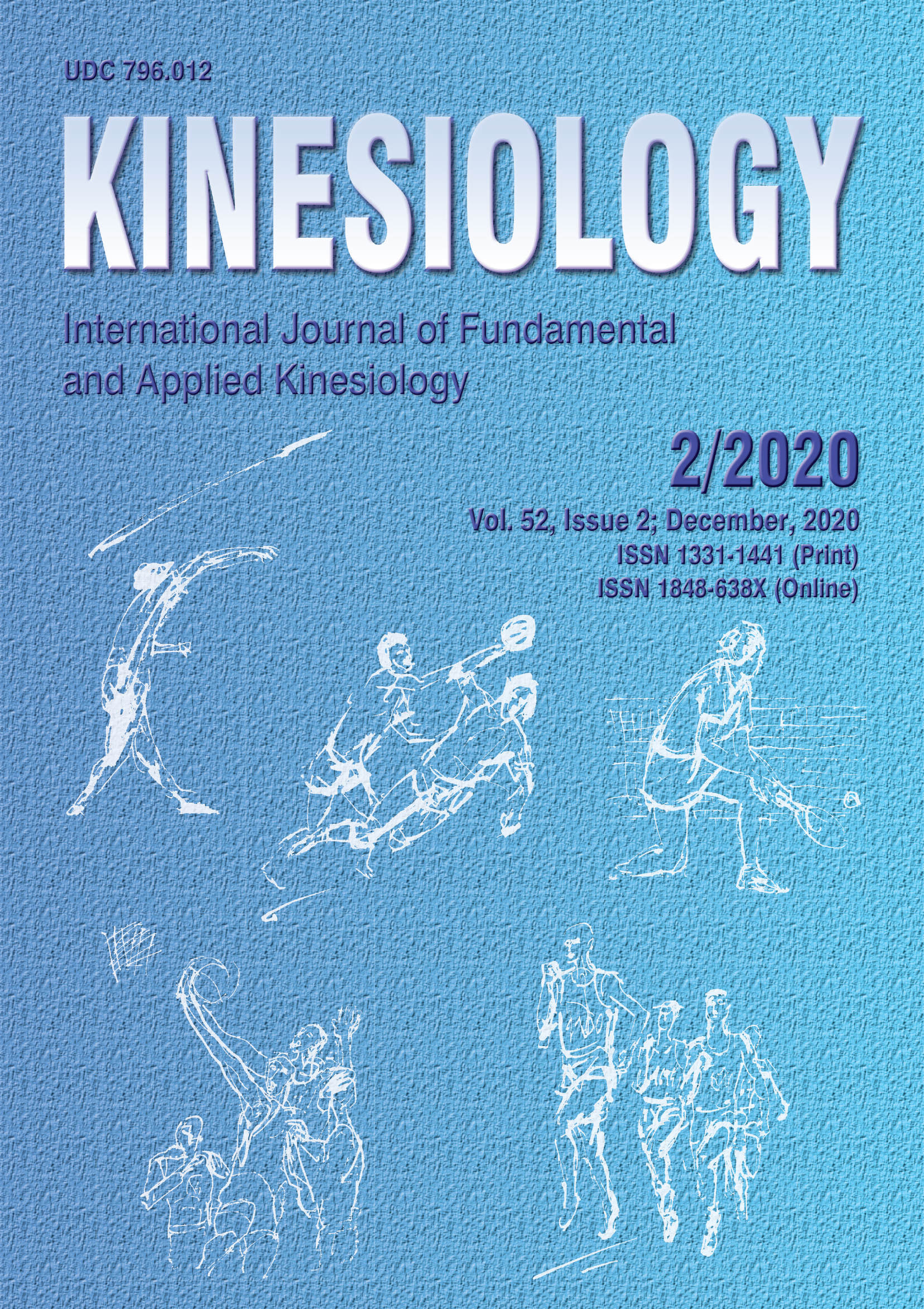HOW CAN XSENS KINEMATIC SUIT ADD TO OUR UNDERSTANDING OF A SLALOM TURN: A CASE STUDY IN LABORATORY AND FIELD CONDITIONS
Abstract
Traditionally used methods for kinematic analysis of alpine skiing has limitations regarding data collecting and data processing. Also, analysis of measured parameters, interpretation, and implementation in practice are postponed. Therefore, aim of this paper was to determine differences in the performance of slalom turns between three conditions using a relatively new technology that allows fast data collecting and analysis. Twenty kinematic variables were analysed for each turn (both the left and right) and 26 turns were executed in each condition. All turns were performed by a national skiing demonstrator. Differences were determined by MANOVA (F=71.3; p=.00). Tukey’s post-hoc test showed that the turns performed on the ski simulator differed in every variable from the turns performed in other two condition, and the free skiing turns differed from the corridor turns in the following variables: hip joint angle of abduction of the right leg in the left turn, p=.00; distance of the projection of the centre of mass relative to the right foot in the left turn, p=.00; hip joint angle of flexion of the left leg in the left turn, p=.02; hip joint angle of abduction of the left leg in the left turn, p=.01; distance of the projection of the centre of mass relative to the left foot in the left turn, p=.00; knee angle of flexion of the left leg in the right turn, p=.04). The kinematic parameters obtained using the XSENS suit during slalom turns performed on the ski simulator and ski slope suggested significant differences in the position of the lower extremities, which might be important for situational efficiency and technical performance. Our results can be used to improve the alpine skiing technique. They suggest more precise relations between space parameters, such as body position and the angles between different body segments during a slalom turn. Methodology of research and technology used could contribute to the development of new scientific approaches in biomechanical research of top-level sports.
Downloads
Published
How to Cite
Issue
Section
License
Copyright (c) 2020 Kinesiology

This work is licensed under a Creative Commons Attribution-NonCommercial 4.0 International License.
At Faculty of Kinesiology we recognize that access to quality research is vital to the scientific community and beyond. Kinesiology is non-profit journal and all costs of publishing and peer review process are covered by the publisher itself or other funding sources like Ministry of Science and Education of the Republic of Croatia. Full text papers are also available free of charge at http://hrcak.srce.hr/kineziologija. There are no restrictions on self archiving of any form of paper (preprint, postprint and publisher's version).
Articles are distributed under the terms of the CC BY - NC 4.0
Kinesiology does not charge any fees to authors to submit or publish articles in our journal.


